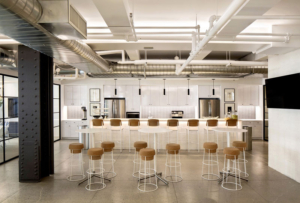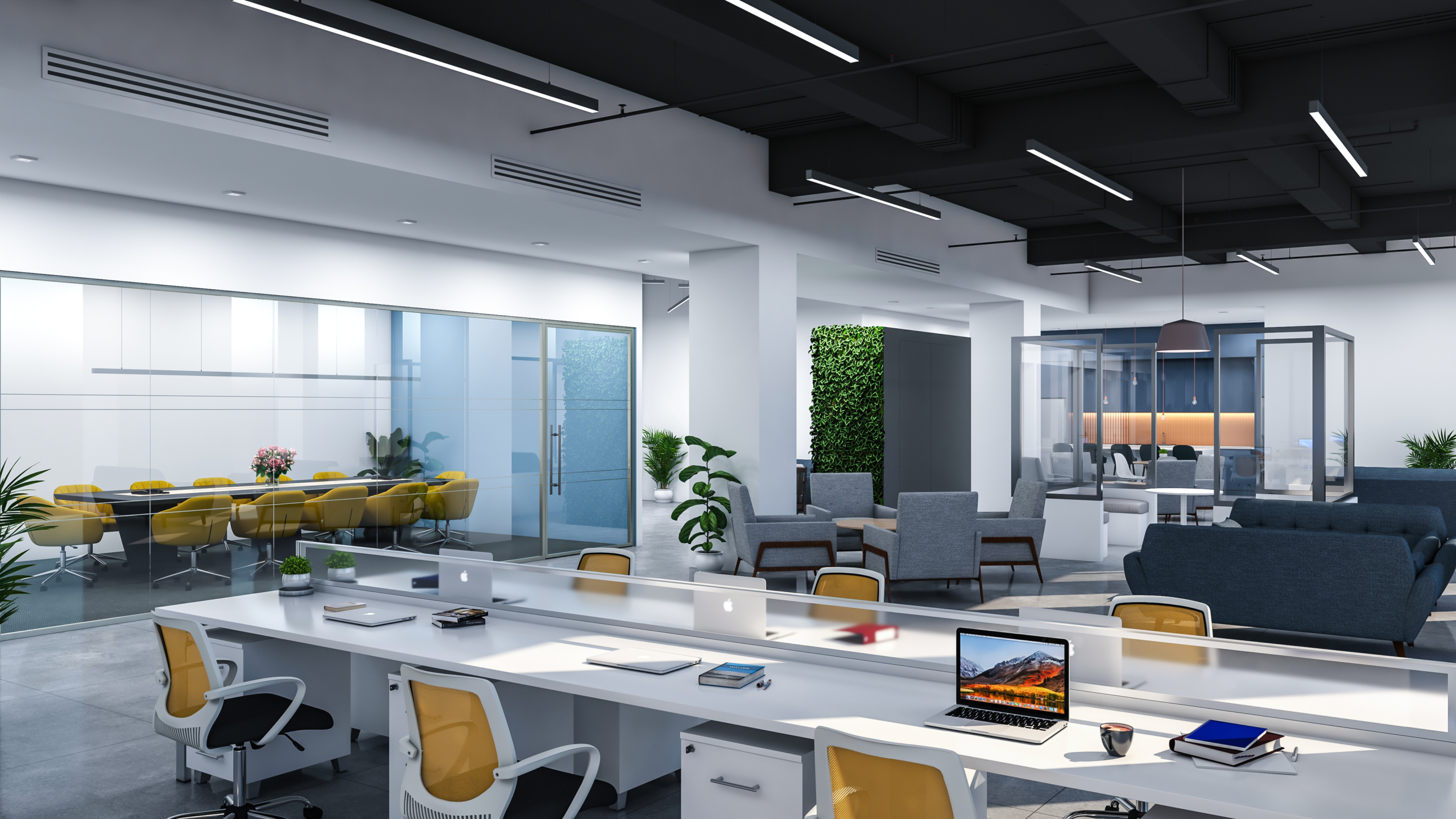As in-office time becomes more prevalent, whether you are going back full-time or flex, the status quo of pre-pandemic office set ups isn’t as appealing any more. One of the key pieces of getting more of your team back in the office is improving their environment, which coincidentally also improves productivity.
What is Ergonomics?
 Ergonomics extends way beyond comfy office chairs and gel wrist rests. Making the best use of space through the optimum placement of equipment, integrating the human factor into workplace design and effectively aligning the workplace into the surrounding environment are all essential aspects of what is known as ergonomics. Research has shown that the design of the workplace has a profound impact on the productivity of its users and using fundamentals of ergonomics can effectively and efficiently address these needs.
Ergonomics extends way beyond comfy office chairs and gel wrist rests. Making the best use of space through the optimum placement of equipment, integrating the human factor into workplace design and effectively aligning the workplace into the surrounding environment are all essential aspects of what is known as ergonomics. Research has shown that the design of the workplace has a profound impact on the productivity of its users and using fundamentals of ergonomics can effectively and efficiently address these needs.
To ensure an office is truly ergonomically friendly, there are specific design principles that encourage efficiency, productivity and safety in the working environment.
-
Jump Around! It’s a long-known fact that sitting down for too long can have an adverse effect on posture, breathing and blood circulation. It is essential to your team’s health to encourage people to get up from their desks and move around. An effective method of doing so is including activity zones or breakout areas in your office design/program. Some examples include game rooms, a hybrid lounge, an accentuated pantry or coffee bar, a creative space or yoga/meditation space.
-
Whose Desk is it Anyways? Often described as activity-based working, hot desking is a seating arrangement in which colleagues have the option to reserve a different desk every day. This strategy offers the flexibility to change workstations often, helping minimize poor habits (like bad-posture and squinting at screens) that develop when you use the same workstation day in and day out. Studies have also found that hot desking has a positive effect on collaboration and productivity too, particularly when hot desking selections align with meetings or collaborative projects.
-
Blinded by the Light: Improper lighting, whether too little or too much, contributes significantly to digital eye strain and overall fatigue. Adaptive lighting solves that, through the ability to adjust color temperatures based on mood or worktype, utilizing multiple lower intensity light fixtures where appropriate and/or creating an adequate contrast between background and foreground. Be sure to consider other environmental office factors such as temperature and air quality as well.
-
The Sound of Silence: Often overlooked, acoustics play a critical role in creating a comfortable work environment. Excess noise can be distracting, frustrating and disruptive to pivotal communications within the workplace. To prevent unwanted noise, consider using sound-absorbing materials, such as wood-wool acoustic panels, creative ceiling baffles and even living walls. You can also mix these interventions with absorptive partitions or acoustic furniture to ensure a more productive work environment.
Pairing these design layout principles with ergonomically friendly furniture will contribute to a healthier work environment that your team members will be much more interested in coming back to. Marketing a space, to either your team returning to the office or a possible future tenant, as ergonomically designed to increase team productivity, helps bridge the gap between their current home set up and an ideal work environment. Gray Space Architecture is adept at working in ergonomic principles to existing program, or consulting on designs to give an added boost of ergonomics. Contact us today at info@grayspacearch.com to add productivity to your workspace.




Leave A Comment